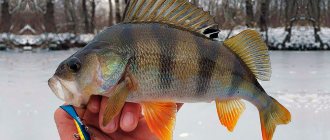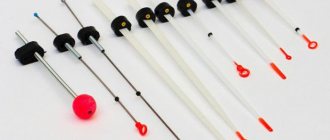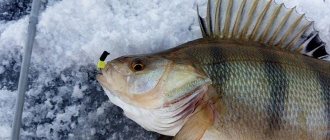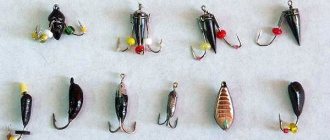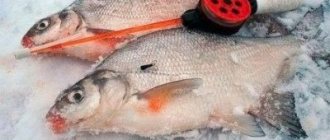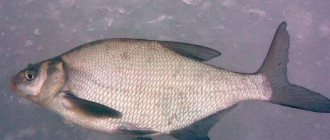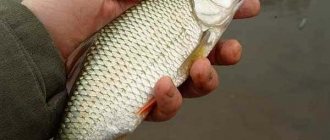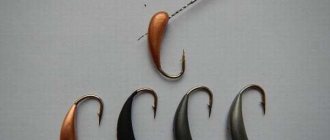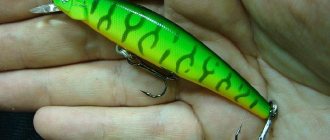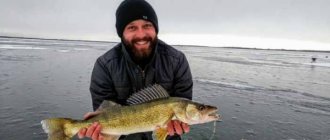In winter, despite the decrease in roach activity, many anglers continue to catch them purposefully. This kind of fishing has many subtleties, and first of all it is catching roach in the winter on the current, which we will dwell on in more detail. It is especially popular at the end of winter, when roach, before spawning, goes to river mouths, where strong currents make their own adjustments. Therefore, first of all, you should understand the equipment.
Where to look for roach in winter
During the cold season, roaches try to stay in those places where the oxygen concentration is highest. Therefore, you need to look for it in flowing streams and deep holes. As a rule, in such areas there is a rather soft muddy bottom, which makes it possible for fish to feed, since there are a sufficient number of different larvae in the mud.
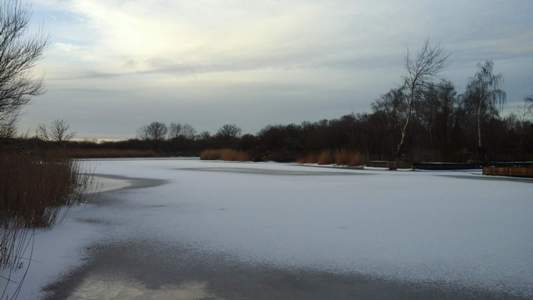
If there is a forest near a rocky reservoir, then most likely you should look for roach in a place where there are a lot of fallen leaves, since stuck leaves favor the breeding of all kinds of living creatures that the fish feed on.
Of course, catch roach in winter using a jig, but only if there is no strong current in the reservoir, otherwise you will be left without a catch. Therefore, on fast-flowing rivers it is better to fish with a float rod.
To catch roach, it is advisable to cut more than 7 holes of small diameter. In this case, you should check each hole for the presence of roach; you need to fish each of them for at least 5 minutes to understand if there is fish in a given place.
Dependence of the bite on the season
Biting on the first ice differs from fishing during the deep winter and early spring fishing. Catching sorog in winter in the north will not be the same as hunting for roach on the Volga. At different times and in different places, this fish behaves differently. But the general trends in the dependence of the bite on the time of year are noticeable. As already mentioned, ice fishing for roach will occur in some places in December, in others in January, and in others in March. Of course, this is not an axiom. In some reservoirs, fish stay in the same places all year round. Migrations are typical for large rivers, huge reservoirs and lakes.
First ice
Fishing on the first ice occurs at shallow depths and in the same places as in the summer. It happens that roach can take the first ice perfectly even at a depth of 20 centimeters, in coastal thickets. But the closer to winter, the deeper and further from the shore this fish prefers to stay, gradually migrating to winter quarters.
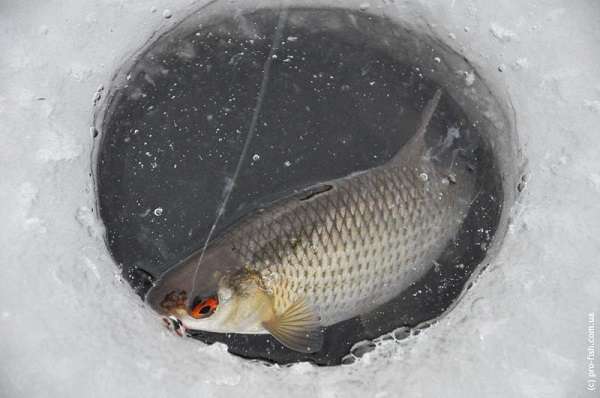
Where to look for roach in December?
At this time, the ice on reservoirs is usually already strong, especially towards the end of the month. Winter is getting stronger. In December, the roach will already be in those places that were discussed in the first half of the article. The fish will already gather in schools and will stand in the water area that they have chosen for wintering. The bite, of course, will be calmer than on the first ice, and here the skill of the fisherman, the correct search methods and tactics are more important.
Roach in January and February
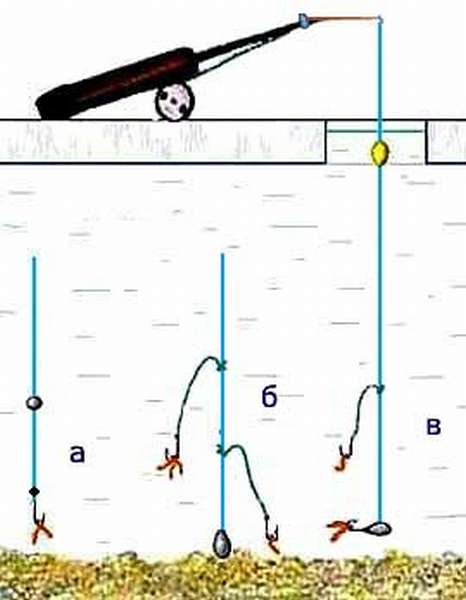
Diversion leash on the current
If there is a strong current that does not allow comfortable fishing with a float or jig, use a fishing rod with a more powerful nod. At the end of the tackle, it is better to mount a version of feeder installations in a mini version - paternoster, asymmetrical loop, inline. Such tackle with a retractable leash will allow you to fish in winter on large rivers with strong currents.
Detailed article:
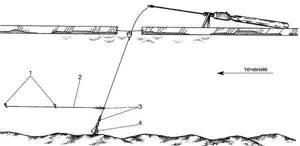
Mormyshka with bloodworms and without a moth
Almost all winter gear for roach uses a jig. In addition to passive fishing with a float, this bait requires active tactics. And it’s better to move around a body of water in search of fish using such equipment. Most anglers hunt this fish with a jig. There are three ways of fishing with this bait:
- Passive method (jigs with bait on the bottom, the bite is determined by the nod).
- Active fishing with a jig with a nozzle.
- Active fishing with a baitless jig (reelless).
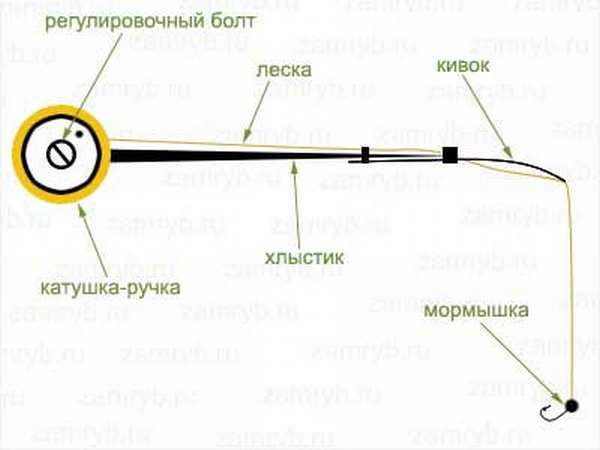
For such fishing, a special light fishing rod with a sensitive nod is used. Each method has an army of fans and its own secrets and features. Information about fishing with a jig with bait and with a riser is disclosed in the article:
Article about catching this fish with a reelless bait:
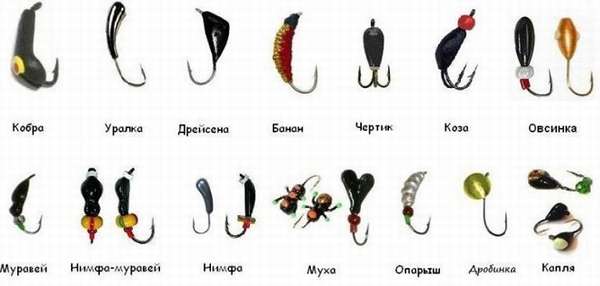
Weather for roach fishing in winter
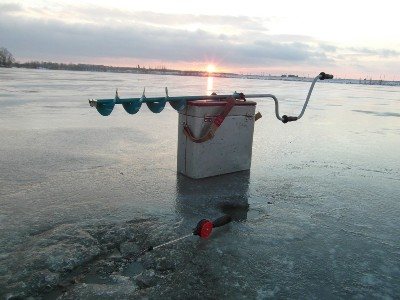
You should not expect an excellent bite if the atmospheric pressure has not established itself, since when it changes, it begins to hurt, and naturally it will not bite. Roach bite best in cloudy weather with little wind. If the wind dies down, then the bite stops altogether, the same thing happens in windy weather. It is best to catch this fish from morning until lunch, then the bite stops, and resumes again in the evening.
If you feed the roach, you can catch it throughout the day, until the first twilight appears. Towards the end of February, the roach becomes more active, which significantly affects its appetite and bite.
Tackle for catching winter roach
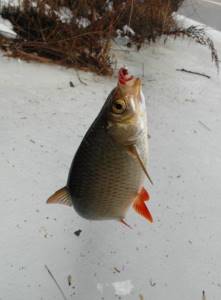
The line should be quite thin and transparent in the water, so buy it no thicker than 0.12 mm maximum. To catch roach in winter, use a small jig, preferably light-colored, preferably made of tungsten, they are very durable and quite heavy, which is important when fishing.
It is also necessary to use a sinker from 10 to 15 g, which is attached to the end of the fishing line, after which I mount a leash up to 25 cm, the diameter of which should be 0.12 mm. It is preferable to use hooks number 4 or 5, depending on the size of the roach. To prevent the fish from being scared away by the hook, it is best to take black hooks, as they are less noticeable in the water.
In winter, the fish behaves extremely carefully, and they also bite unsurely, so at the slightest movement of the float you should immediately hook it so that the roach does not leave the hook. If the current in the body of water in which you are fishing is quite strong, then it can blow out the fishing line, thereby simulating a bite. In this case, try placing it with a smaller diameter; as a rule, this eliminates false bites from roaches.
Rigging a winter fishing rod for roach
Tackle for roach in winter for a fishing rod with a float looks quite simple, usually it is a bottom tackle with a sinker at the bottom and hooks or jigs above the sinker, and another version of the tackle is similar to the usual summer float tackle for catching roach, where the sinker is higher than the hook or jig. Tackle for roach in winter with a load below and hooks above the load has a number of advantages over conventional summer tackle, since it is more convenient when fishing for roach in winter on the current and at great depths, the tackle with bait sinks to the bottom faster and the load does not drift away in the current.
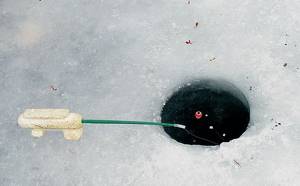
For such bottom gear for roach in winter, you need a float or nod, a main fishing line with a diameter of 0.16-0.22 mm, a crossbar or leashes made of wire or plastic, leashes made of fishing line with a diameter of 0.08-0.14 mm for hooks. A lead sinker, weighing 10-20 grams, is usually tied to the end of the main line; the weight of the sinker must be chosen depending on the fishing conditions; in strong currents, it is better to take a heavier load and instead of a float, a spring hard nod is used; the same nod as when fishing for smelt is suitable in winter from the ice.
A crossbar similar to a rocker arm is fixed a little higher from the sinker at a distance of 15-25 cm. And also, instead of a crossbar, you can make two or three rigid leashes - branches in increments of 25-35 cm from the sinker on the main fishing line. Rocker arms and bends for equipping a winter fishing rod for roach are usually made of elastic wire or plastic, structurally so that they can be fixed on the main fishing line without cutting it and in such a way that they can be moved along the fishing line, changing the depth of the hook with bait. And at the other end of the bend or the ends of the rocker there are loops for tying a leash made of fishing line with a hook or jig. Rocker arms and leashes - bends for equipping a fishing rod for winter roach fishing can be bought at any fishing store or made independently.
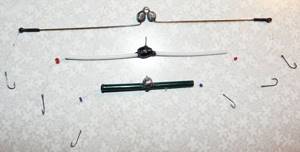
On a rocker or outlet, the length of the leash made from a fishing line with a hook should be such that the hook does not cling to the main fishing line when the tackle is lowered into the water and the hook is located away from the main fishing line. It is better to make the lowest leash of the fishing line longer, so that when casting the tackle, when the sinker is at the bottom, the hook with the nozzle lies on the bottom away from the sinker. A roach hook for equipping a winter fishing rod is not needed; roaches have a small mouth; usually a hook size 4-6 is suitable (hook number according to Russian numbering). You can fish in a current without a crossbar or bends by tying leashes to the main line; the current will carry the leashes with hooks away from the main line.
The float for equipping a winter fishing rod for roach should not be large, the most ordinary one, you can easily make it yourself from a piece of polystyrene foam, polyurethane foam or a wine cork and a match. The main thing is that the float is sensitive to roach bites or other fish. The float should be selected in such a way that the sinker, jigs and hooks placed on the fishing line confidently sink it to determine the bottom with the tackle, and it is also better to adjust the equipment so that the float is slightly recessed in the hole so that it does not freeze into the ice crust during frost. The float is usually stationary with a cambric for fixation and for easy movement along the line to adjust the depth.
When fishing for roach in winter on a fishing rod with a float, bloodworms, maggots, wheat dough and worms are usually used as bait. Although the best bait for winter roach fishing is a bloodworm. For roach in winter, they put 2 or 3 bloodworms on the hook, piercing them below the head, at the second joint, and if the bite is completely sluggish, then you can string the largest bloodworm like a worm, that is, after piercing the sting behind the head, carefully slide the bloodworm onto the hook . This operation for equipping a hook with a nozzle is not difficult if the hook is small and sharp and the bloodworm is large.
And also do not forget that winter fishing for roach will be more effective when using a feeder and roach bait. Feeding roaches in winter is a necessary measure to attract fish to the fishing site and further keep the roaches in this place. Catching roach in winter with a feeder is important, both in still water and when fishing in the current.
Bait for roaches in winter
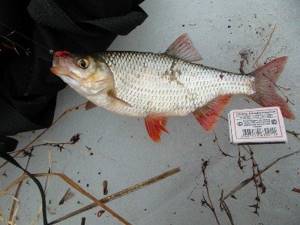
The feeding hole should be cut no further than 40 cm from the main hole, and be sure to take into account the current so as not to be left without fish completely. The tightly compacted bloodworms are placed in an iron feeder and lowered into the bait hole. If the bottom is soft (muddy), then it is advisable to open the feeder with bloodworms at a distance of approximately 40 cm from the bottom; if it is rocky, then 5 cm will be enough. Depending on the preference of the fish in a particular body of water, bloodworms can be mixed with a tubifex or worm.
If the depth in the reservoir is not very deep and the bottom is muddy, then you can tap the bottom with a pole from time to time, which will raise turbidity, which is of great interest to roach, rudd, bream, and silver bream.
In addition, you can feed the roach 2-3 days before the main fishing, placing the bait in the same place every day. In this case, it is advisable to do this at the same time, as a result the fish will again wait for the next portion of bloodworms.
What to catch roach with
It is best to use bloodworms, fresh dough or maggots as bait for catching roach in winter.
When kneading the dough, you can add a little attractants, but do not overdo it, since in cold water a large number of aromas can repel roaches for a long time. Most of all, roaches love anise, vanilla, cinnamon, strawberries, and honey. These attractants can be easily purchased at any fishing store. In this case, you need to add it literally a couple of drops, but no more.
How to catch roach with a jig

To do this, it is better to use two types of games (wiring). They lower the jig to the bottom, then lift it about 20 cm from the bottom and begin to swing it in different directions; this must be done smoothly without jerking. Or lower the jig and gradually lift it up, creating a slight vibration, then lower it to the bottom again.
Please note that all sudden movements in the water do not attract roaches at all and may even scare them away. Therefore, when playing, stick to smooth and calm movements. If desired, you can put a delicious worm or maggot on the jig. The roach bite is very uncertain, so do not forget that you need to hook it immediately.
Lures
The baits for catching roach in the current are the same as in still water . The main difference between this type of fishing is the equipment and the special feeding technique .
Natural
Natural baits that work well include:
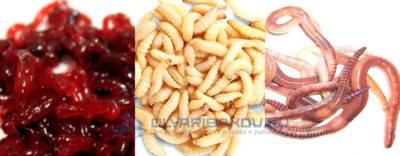
bloodworm;- maggot;
- worm;
- dough;
- semolina chatter.
Preference, as always when fishing for roach in winter, should be given to animal baits . Plant-based ones usually work worse, but they can also be added to your arsenal. Another good option is to use sandwiches made from animal and plant baits, for example, putting bloodworms on a hook along with dough.
Artificial
There are two options for using jigs when catching roach in the current.
- Use them together with equipment with a sinker that lies on the bottom. In this case, animal bait is put on the hook of the jig. There is no need to set any game to the bait.
- Active game with a jig. This option is possible in slow and medium flows. In this case, heavy jigs must be used - from 0.5 g or more. Tungsten baits work well. A tungsten body, despite its small dimensions, has more weight than a lead body. Therefore, jigs made from this metal are well suited for currents.
